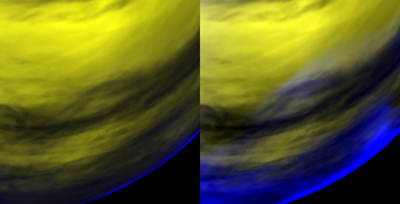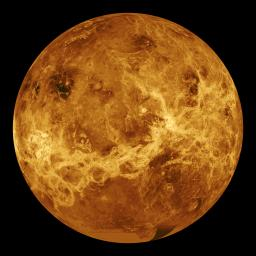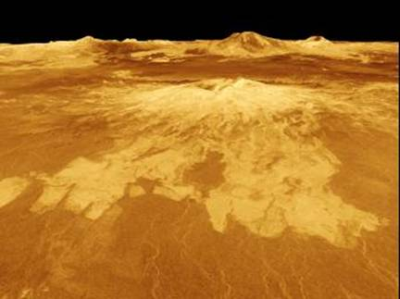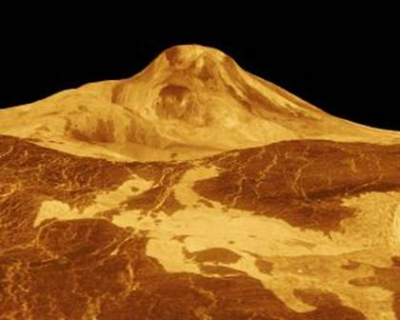19 April 2007

False-color views of Venus by the Venus Express spacecraft
Credits: ESA/VIRTIS/INAF-IASF/Obs. de Paris-LESIA
On 11 April 2006, the European Venus Express spacecraft arrived at Venus, our nearest planetary neighbor, after approximately 5 months in space. This is the first European Space Agency (ESA) space probe to explore Venus. Venus Express has been orbiting our Twin Planet for over one year.
Through this year, Venus Express has accomplished many outstanding achievements, including unique studies of Venus' atmosphere. Venus has been extensively explored by space probes from the former Soviet Union and the USA since the 1960s, but Venus Express is currently the only operational spacecraft at Venus.

A radar map of the surface of Venus
Credit: NASA/JPL
Venus is one of the most enigmatic objects in the Solar System. Although the mass and size of Venus are nearly similar to Earth's, but these similarities are only apparent. The planet's surface temperature is at least 430° C, the highest planetary temperature. It is hotter than a microwave oven.

A computer-generated image of volcanoes and rugged terrain of Venus, based on data gathered by the Magellan spacecraft
Credit: NASA/JPL
Venus stormy atmosphere is composed primarily of suffocating carbon dioxide gas. The atmospheric pressure at the surface of Venus is 90 times that of Earth, or equal to that at a depth of 1 km in the ocean. Interestingly, Venus is likened to a pressure cooker.
The surface of Venus is very rugged, featuring numerous volcanoes and lofty mountains.
With sophisticated onboard instruments, Venus Express is studying the atmosphere of Venus, its interaction with the solar wind, and the planet's space environment. The probe is also searching for any signs of surface activity, such as possible volcanic eruptions.

A computer-generated image of Maat Mons, a huge volcano on Venus
This volcano is named after Maat, the mythological Egyptian goddess of justice.
Credit: NASA/JPL
Venus Express has acquired exquisite global views of the complex vortex at Venus’ south pole, the first sets of 3D data about the structure and dynamics of the clouds obscuring the planet, temperature maps of the surface and the atmosphere at different altitudes. Scientists expect that the Venus orbiter will improve our understanding of the mysterious, hellish world Venus.
In February 2007, ESA's Science Program Committee approved a mission extension for the highly successful probe till May 2009. Originally, the Venus Express mission was 500 days long, or slightly longer than 2 rotations of Venus about its rotational axis (sidereal days). With the mission extension, Venus Express will observe the cloudy, hellish planet for 2 more Venus days.
Further Reading
Venus Express Homepage
http://www.esa.int/SPECIALS/Venus_Express/index.html
Venus and Earth Compared
http://sci.esa.int/science-e/www/object/index.cfm?fobjectid=34067
Aymen Mohamed Ibrahem
Senior Astronomy Specialist